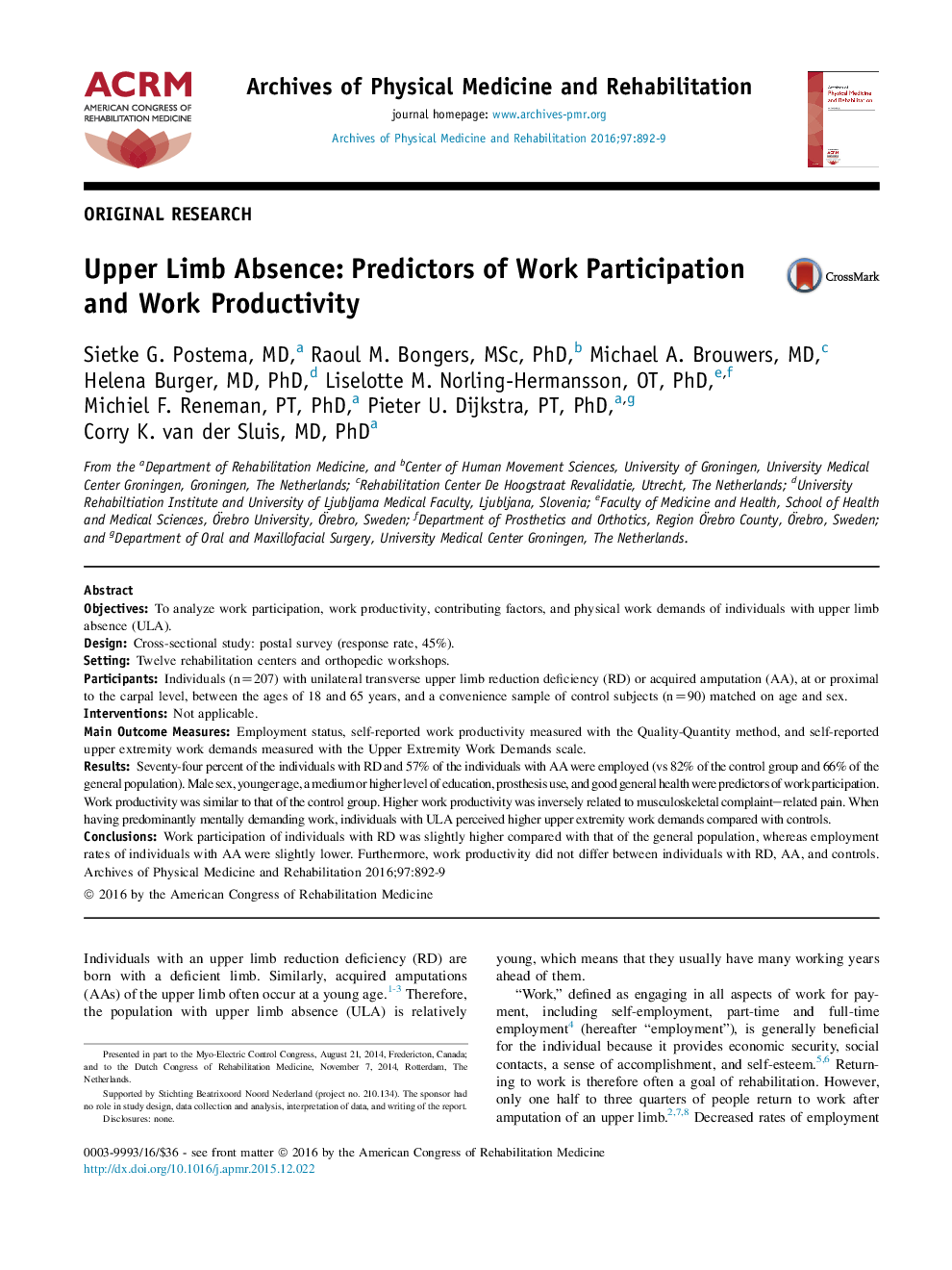| Article ID | Journal | Published Year | Pages | File Type |
|---|---|---|---|---|
| 3447889 | Archives of Physical Medicine and Rehabilitation | 2016 | 8 Pages |
ObjectivesTo analyze work participation, work productivity, contributing factors, and physical work demands of individuals with upper limb absence (ULA).DesignCross-sectional study: postal survey (response rate, 45%).SettingTwelve rehabilitation centers and orthopedic workshops.ParticipantsIndividuals (n=207) with unilateral transverse upper limb reduction deficiency (RD) or acquired amputation (AA), at or proximal to the carpal level, between the ages of 18 and 65 years, and a convenience sample of control subjects (n=90) matched on age and sex.InterventionsNot applicable.Main Outcome MeasuresEmployment status, self-reported work productivity measured with the Quality-Quantity method, and self-reported upper extremity work demands measured with the Upper Extremity Work Demands scale.ResultsSeventy-four percent of the individuals with RD and 57% of the individuals with AA were employed (vs 82% of the control group and 66% of the general population). Male sex, younger age, a medium or higher level of education, prosthesis use, and good general health were predictors of work participation. Work productivity was similar to that of the control group. Higher work productivity was inversely related to musculoskeletal complaint–related pain. When having predominantly mentally demanding work, individuals with ULA perceived higher upper extremity work demands compared with controls.ConclusionsWork participation of individuals with RD was slightly higher compared with that of the general population, whereas employment rates of individuals with AA were slightly lower. Furthermore, work productivity did not differ between individuals with RD, AA, and controls.
